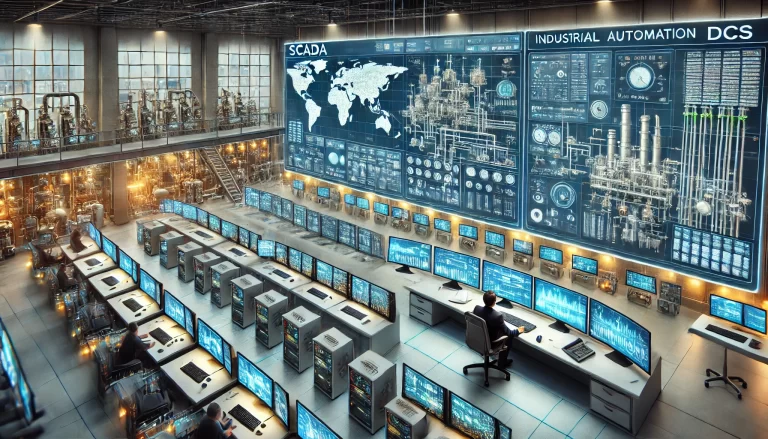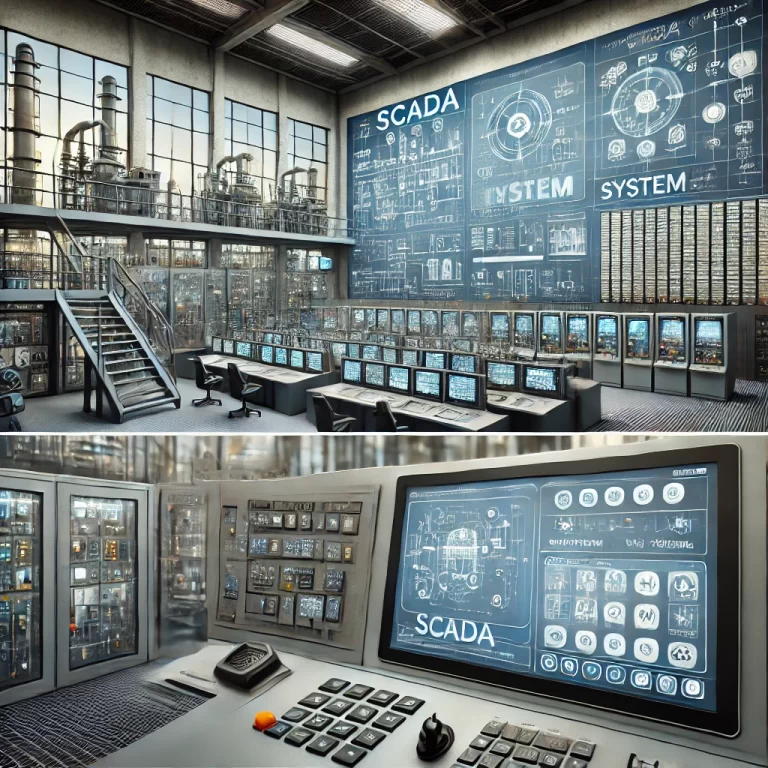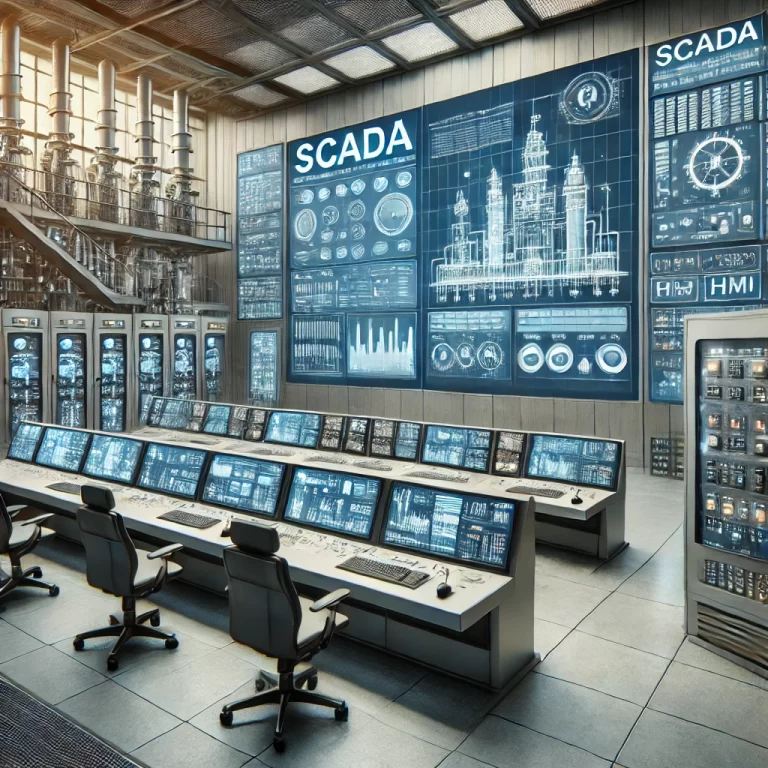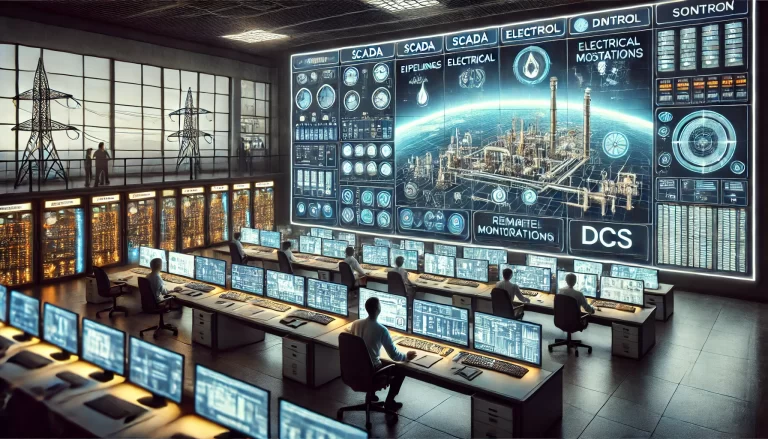In the realm of industrial automation and control systems, two key components often come into focus: SCADA (Supervisory Control and Data Acquisition) and HMI (Human-Machine Interface). While these systems are interconnected and sometimes overlap in functionality, they serve distinct purposes within industrial operations. Understanding their differences is essential for implementing efficient and effective control systems.

Definition and Primary Functions
SCADA is an overarching system designed for comprehensive monitoring and control of industrial processes. It collects real-time data from various sensors, devices, and machines across a wide network, processes this data, and enables operators to supervise and control the entire system. SCADA systems are engineered to handle large-scale and often geographically dispersed operations, such as power grids, water treatment plants, and oil pipelines.
HMI, on the other hand, serves as the visual interface between humans and machines. It provides operators with a graphical representation of system data and allows for direct interaction with machinery through visual controls such as buttons, indicators, and touchscreens. HMI focuses on facilitating real-time data visualization and user interaction, typically at a localized or machine-specific level.

Functional Scope
SCADA systems encompass a broader range of functionalities compared to HMIs. A SCADA system integrates data acquisition, process monitoring, alarm management, historical data logging, trend analysis, and even advanced reporting tools. These capabilities allow for centralized supervision, decision-making, and performance optimization across complex industrial systems.
In contrast, HMIs are primarily tasked with displaying real-time data and providing user-friendly controls for machinery operation. They offer basic alarm notifications and system feedback, enabling operators to respond to immediate issues. HMIs generally lack the extensive data processing and historical data management features inherent in SCADA systems.
System Architecture
The architectural hierarchy of SCADA and HMI systems also highlights their differences. SCADA systems operate at a higher control level and can integrate multiple HMIs, PLCs (Programmable Logic Controllers), and RTUs (Remote Terminal Units). This setup allows SCADA systems to manage vast industrial networks and coordinate activities across multiple facilities or production lines.
HMIs, however, are positioned closer to the field level. They are directly connected to specific machines or processes and communicate with PLCs to present real-time data and receive operator commands. While they can function independently for localized control, HMIs are often incorporated into SCADA systems for broader system integration.
Data Processing and Management
One of the defining distinctions between SCADA and HMI lies in their data handling capabilities. SCADA systems are built for extensive data collection, processing, and analysis. They store historical data for trend analysis, predictive maintenance, and performance optimization. Advanced SCADA systems also support data analytics, enabling operators to make informed decisions based on comprehensive system insights.
HMIs primarily focus on presenting current system status and alarms. Their data processing is limited to real-time information relevant to the specific equipment or process they control. They are not typically designed to handle large datasets or perform in-depth data analysis.

Typical Applications
SCADA systems are indispensable in industries requiring widespread monitoring and control, such as:
Power generation and distribution: Managing electrical grids and substations.
Water and wastewater treatment: Monitoring and controlling water treatment processes and distribution.
Oil and gas: Supervising drilling operations, pipelines, and refinery processes.
Transportation: Controlling railway systems, traffic signals, and public transit networks.
HMIs are commonly used in more localized industrial settings, such as:
Manufacturing lines: Operating machinery and monitoring production metrics.
Packaging systems: Controlling conveyor belts and packaging equipment.
HVAC systems: Managing heating, ventilation, and air conditioning controls.
Machine tools: Providing interface controls for CNC machines and robotic arms.
Relationship and Integration
Although SCADA and HMI serve different roles, they are often integrated within industrial systems. A SCADA system can manage multiple HMIs, consolidating data from various machines and processes into a unified control interface. HMIs enable operators to interact with individual components, while SCADA systems offer a comprehensive view and control over the entire operation.
In some scenarios, an HMI may function independently without being connected to a SCADA system, particularly in smaller or less complex operations. Conversely, SCADA systems rely on HMIs to provide user-friendly interfaces for human interaction.

Conclusion
In summary, SCADA and HMI are both vital components of modern industrial automation but differ significantly in their functions and applications. SCADA systems provide large-scale supervision, data management, and control across expansive industrial networks, while HMIs focus on localized machine operation and user interaction. Understanding their distinct roles and how they complement each other is crucial for designing and implementing efficient industrial control systems.
